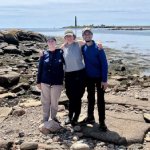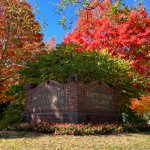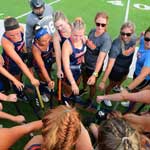
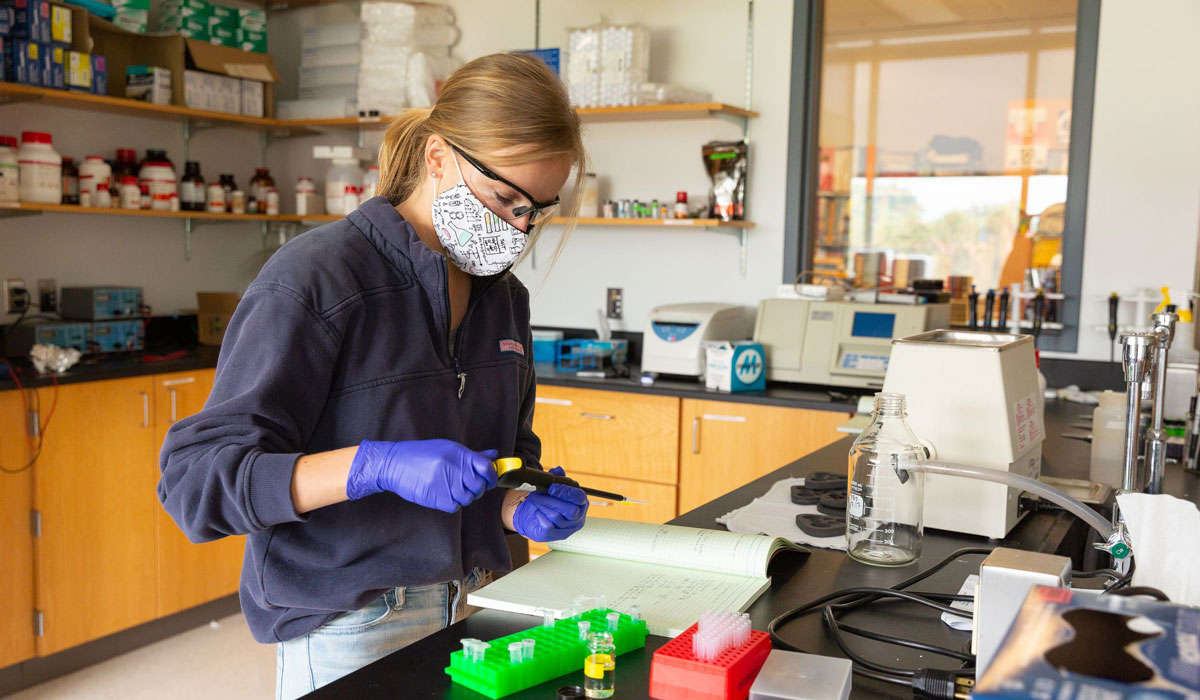
Ten years ago, Chemistry Prof. Shelli Frey contributed to a collaborative proposal written by Gettysburg College faculty in the Biology, Physics, and Chemistry departments that was submitted to the Howard Hughes Medical Institute. The proposal was for a science education research grant that would establish the foundations of what we know today as the Cross-Disciplinary Science Institute at Gettysburg College (X-SIG), which sponsors a cornerstone student summer research experience on campus.
This idea of cross-disciplinary communication and collaboration is the backbone of X-SIG, where students are trained to be “Research Ready, Research Active, and Research Connected.” Through the innovative program, students spend their summer months working alongside a faculty mentor, conducting hands-on research and fieldwork, and learning the ins and outs of the techniques used in their respective STEM fields, while actively conversing with fellow X-SIG participants.
“Our students grow not only by taking classes, but also by learning how to become researchers in the lab, the field, or in front of a computer,” said Frey, whose academic focus includes biophysical chemistry and lipid membrane biophysics.
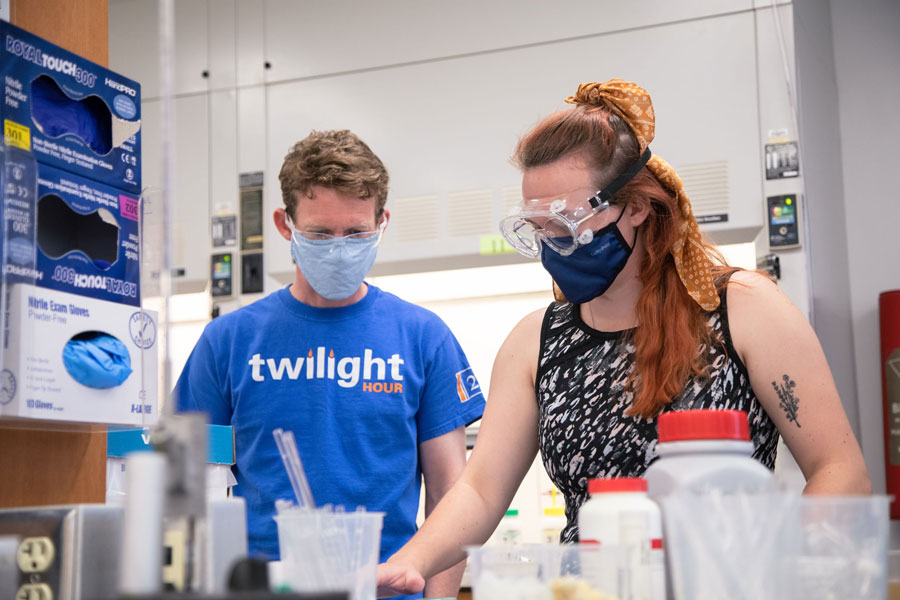
Emily Howe ’23 is one such student who participated in X-SIG this past summer. She worked with Chemistry Prof. Timothy Funk on creating a library of synthetic lipids based on the compound cyanuric chloride. Her advice to anyone interested in X-SIG is to join the program as soon as possible.
“You have enough background to do it even as a first-year,” assured Howe, a biochemistry and molecular biology and Spanish double major. “You will be drastically ahead of where you would have been otherwise by the end of the summer.”
Funk and Howe also worked alongside Gettysburg alumnus Dr. Vince Venditto ’03 of the University of Kentucky College of Pharmacy. His lab focuses on creating liposomes to use in vaccine delivery. Venditto’s willingness to lend his own professional expertise for the benefit of students is yet another example of the Gettysburg Network in action and the collaborative environment X-SIG strives to cultivate.
“This lipid synthesis project helps with one aspect of the vaccine development process. Through X-SIG, students learn how to design experiments and how to actively troubleshoot when the experiment is not working,” said Funk.
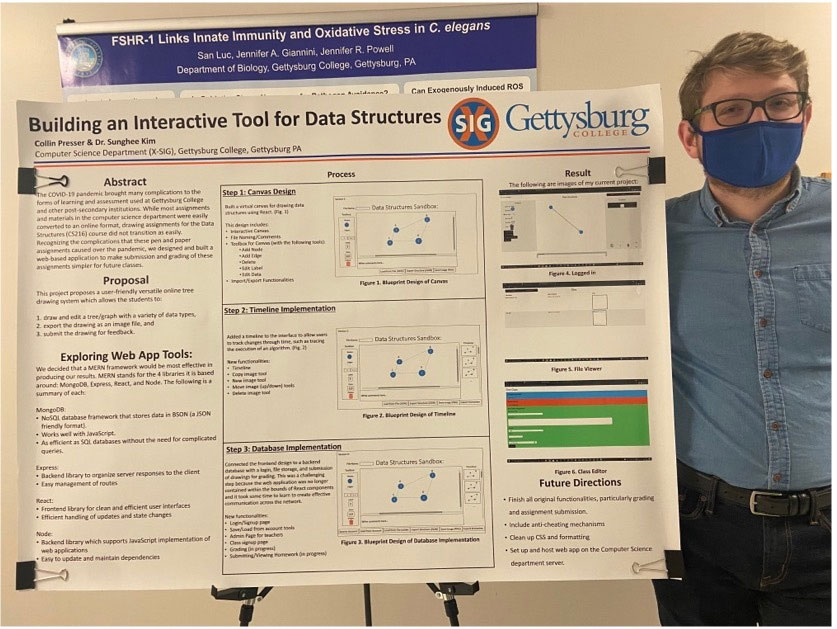
Due to the vast number of topics X-SIG covers, no two projects are the same. In fact, the methods of research and experimentation employed by Gettysburg students, and the outcomes they achieve, may even differ greatly.
This was the case for Collin Presser ’23, a computer science and music double major. Presser built a website for the Computer Science Department’s central course, CS 216 Data Structures.
“This class introduces students to the primary data structures used in advanced programming and the algorithms most commonly associated with them,” said Presser.
When COVID-19 hit, Computer Science Prof. Sunghee Kim discovered that assignments that required students to draw data structures by hand had suddenly become increasingly challenging to submit. These assignments, in turn, became more difficult for professors to grade. Kim encouraged Presser to design a website that would allow users to create virtual drawings for submission. She advised Presser on where to look for resources and she provided him with feedback and preferences similar to a real-world client.
“Research doesn’t always have to be about writing papers,” reflected Presser. “I connected to this research on a personal level. It helped me to apply well-known industry tools that I will eventually use in my career.”
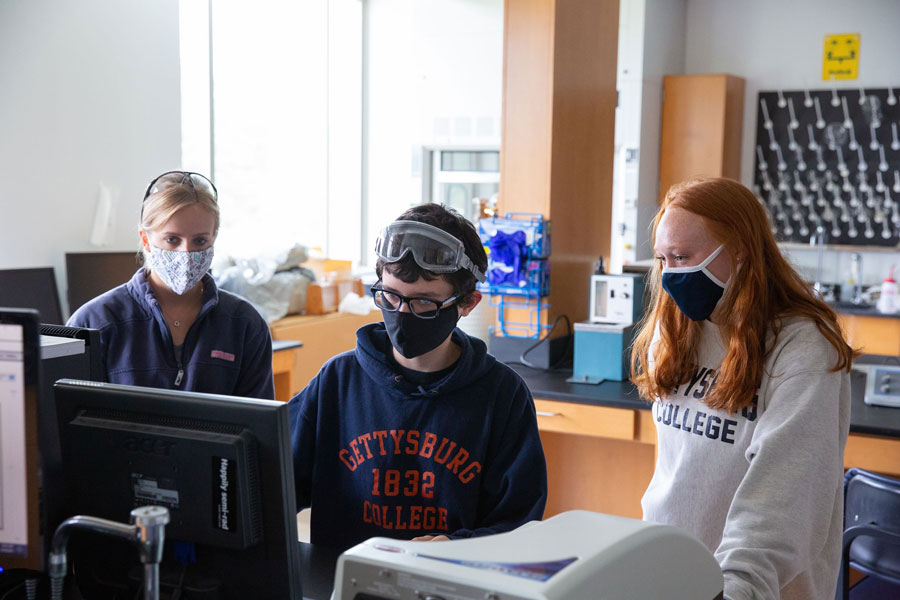
Frey partnered with four students this past summer. Chemistry major Abby Reitz ’22 focused on the biochemistry behind Huntington’s Disease (HD), which is a genetic neurodegenerative disease with no current cure. Jordyn Markle ’22, a biochemistry and molecular biology major and studio art minor, studied the interaction of Huntingtin protein with model cell membranes en route to understanding the toxicity mechanism. Tristian Kucera ’23, a molecular biology and biochemistry major, worked on characterizing an organelle called the zincosome, which is thought to store zinc to help keep the cell in zinc equilibrium. Lastly, Kacie Herr ’22, a biochemistry and molecular biology major, studied how nanoparticles interact with and affect model cell membranes.
Upon completion of the summer program, Frey helped her students submit research abstracts to the Biophysical Society Annual Meeting in San Francisco, where they will present posters this February. X-SIG provides grants for this student conference travel and this initiative has recently been augmented by a generous donation to X-SIG by Gail Seygal ’67.
With 72 students and 28 faculty advisors participating in X-SIG this summer, even after a COVID-stricken year, there was a palpable enthusiasm around the program. With Gettysburg students and faculty back on campus, X-SIG assisted with restoring a sense of community among our student researchers.
“At our social hours, every researcher would come together and eat, hang out, and enjoy hacky sack,” said Frey. “You had the opportunity to sit with someone from a different field during lunch, which purposefully promotes interdepartmental communication.”
Our X-SIG summer research program is unique in that it fosters interdisciplinary research and communication across the disciplines, teaching students how to conduct independent research, while at the same time ensuring each student has a community of like-minded peers and advisors there to offer support.
Learn more about the X-SIG program through their website and blog.
By Ratul Rauniar Pradhan ’25
Photos by Shawna Sherrell and Ratul Rauniar Pradhan ’25
Posted: 12/20/21
